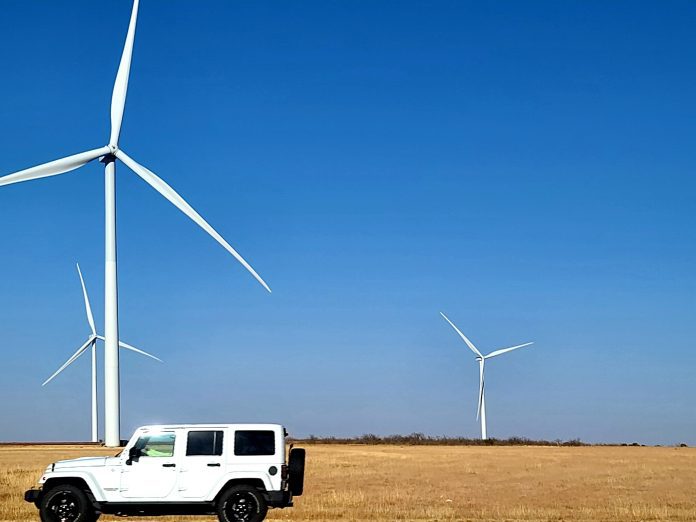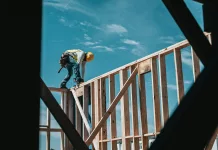Although the amount of clean energy on the Texas electricity grid is growing quickly, authorities in the Lone Star State are currently exploring a plan that might increase the use of fossil fuels.
The three sources of energy with no greenhouse gas emissions—wind, solar, and nuclear—provided more than 40% of the state’s electricity in 2022. A number of Texas cities that year experienced their warmest summers on record, which led to the highest levels of electricity consumption ever when fans and air conditioners turned on. Additionally stressful was winter, which saw record-high winter electrical peak levels last month due to frigid temperatures, narrowly averting disruptions.
It wasn’t just Texas. States like California have experienced their own blackouts over the past year as hot weather increased electricity use and the prolonged drought in the Western US reduced power supplies. Renewable energy is expanding across the nation, but so are grid-related risks. Utility regulators are attempting to adjust, and Texas, the top energy producer in the US, may offer important insights.
Texas, though, faces some particular challenges.
Texas is the top US producer of oil and natural gas, as well as wind energy. In the last three years, the state’s solar energy production has practically tripled. Texas’s grid is especially well suited to using renewable energy, which is one of the causes. As a result of the high degree of “complementarity” between wind turbines and solar panels in Texas, any deficiencies in one source are frequently made up for by gains in the other, smoothing out power supply and lowering the need for backup generators. This has made it simpler to integrate sporadic energy sources into the system.
In Texas, coal has seen a greater than 50% decline in market share since 2006. The narrative persisted for a while that inexpensive natural gas produced by hydraulic fracturing was displacing coal from the power grid. Coal was also subject to stronger environmental laws, such as limitations on mercury emissions, which necessitated equipment upgrades at coal power plants and increased the cost of electricity generation.
Michael Webber, a professor of energy resources at the University of Texas at Austin, stated that the stricter environmental restrictions combined with the low prices of competitors make coal difficult to compete in the market.
But for more than a decade, natural gas has maintained a 40% portion of the electrical mix in Texas. On the other side, as coal declined, renewable energy increased. In 2019, coal was finally surpassed by wind, which is currently the state’s second-largest source of electricity after natural gas.
The state’s internal power grid, which serves 26 million users and meets 90% of its electrical consumption, is a crucial element. It is run by the non-profit ERCOT, or Electric Reliability Council of Texas. The least expensive electricity sources—wind and solar, which have minimal construction costs, quick build timeframes, and no fuel costs—have emerged as victors in the rogue Texas energy market.
Additionally, some Texans go out of their way to purchase sustainable energy. Numerous customers have chosen to pay more for wind and solar energy through utilities like Austin Energy. A spokeswoman for Austin Energy, Matt Mitchell, wrote in an email that the company’s decades-long shift toward renewable energy “reflects the values of our customers and our city.”
The Texas electrical grid escapes federal monitoring since there aren’t many connections to other states’ grids, giving Texans more latitude in establishing their own regulations. The drawback is that Texas finds it challenging to obtain additional power when its own dynamos falter.
When Winter Storm Uri froze broad parts of the United States in February 2021, that became painfully clear. As temperatures dropped below those in Alaska, more than 4 million Texas customers lost power. Although some estimates put the number higher, the official death toll was 246.
The fuel flow into power plants was halted by frozen coal stacks and natural gas pipes, which were the main causes of the blackouts. However, Texas Republicans, including Governor Greg Abbott, pointed the finger of blame at wind energy.
To shift the balance in favor of fossil fuels, certain lawmakers are currently working. Various political actors, according to Webber, “are seeking to promote gas power plants or reject, prohibit, or inhibit renewables.”
The Texas legislature approved a bill last year that forbids the retirement and investment funds of the state from doing business with organizations that “boycott” fossil fuels.
Securing increased assistance for natural gas-fired electricity is one of Texas Lt. Governor Dan Patrick’s legislative objectives for this year. Patrick stated during a news conference in November that “we need to level the playing field so that we can encourage investment in natural gas plants.” Without a strategy for more natural gas power, we won’t be able to leave this place in the spring.
August 2007 saw the installation of solar panels on a roof in Austin, Texas. Tribune News Service/Andrew Loehman, Chicago Tribune via Getty Pictures
He could get his way. The Texas Public Utility Commission, which oversees power, is now taking suggestions for ways to restructure the electricity market to improve reliability into consideration in light of recent winter storms. A proposal that is purportedly technology-neutral but may wind up favoring natural gas plants was accepted by the commission this month.
While solar and wind energy are growing in popularity, they are sporadic, so regulators want to make sure there is enough dispatchable energy, like natural gas, to ramp up on dull, overcast days. With the new concept, those currently operating generators that are finding it difficult to compete would be given a lifeline and incentives for additional of these dispatchable plants to go online. However, the price of producing electricity would also go up.
Environmental organizations like the Sierra Club pointed out that the idea allows room for additional strategies for balancing the supply and demand of electricity, such as energy storage, improved energy efficiency, and demand response.
The rest of the nation should be interested in what Texas regulators work out as they finalize the specifics of these measures. The US power grid is under more strain than ever as a result of increased demand, constrained supplies, and infrastructure damage from extreme weather events. Climate change is pushing average temperatures upward. Despite the fact that there are more clean energy options than ever, the electricity grid is still under attack.




























